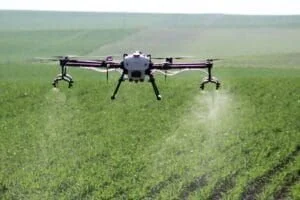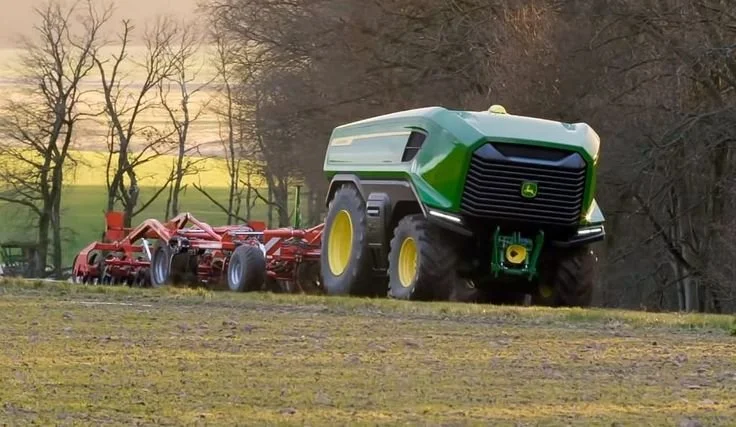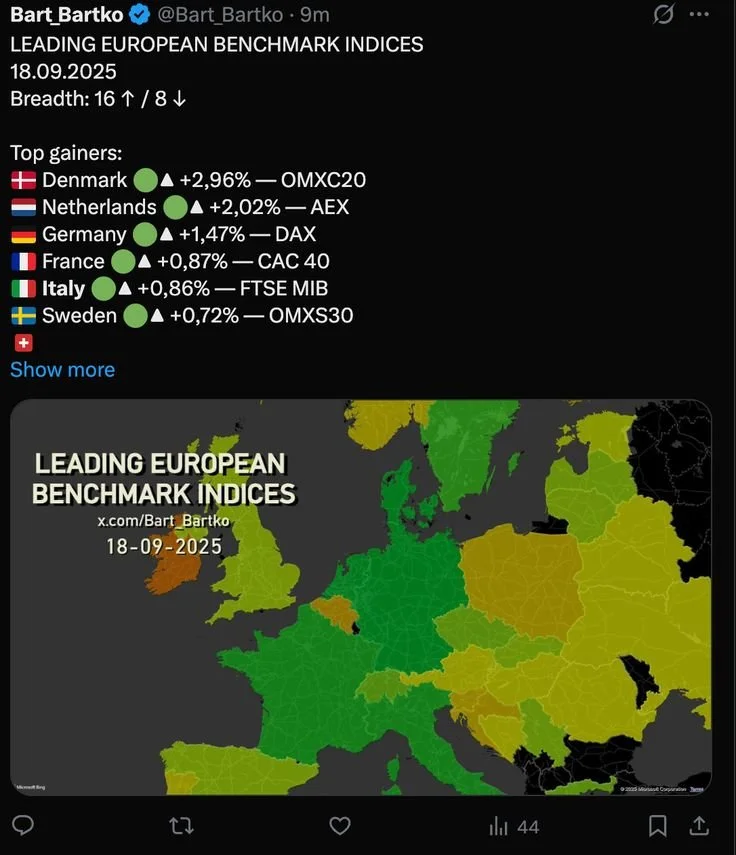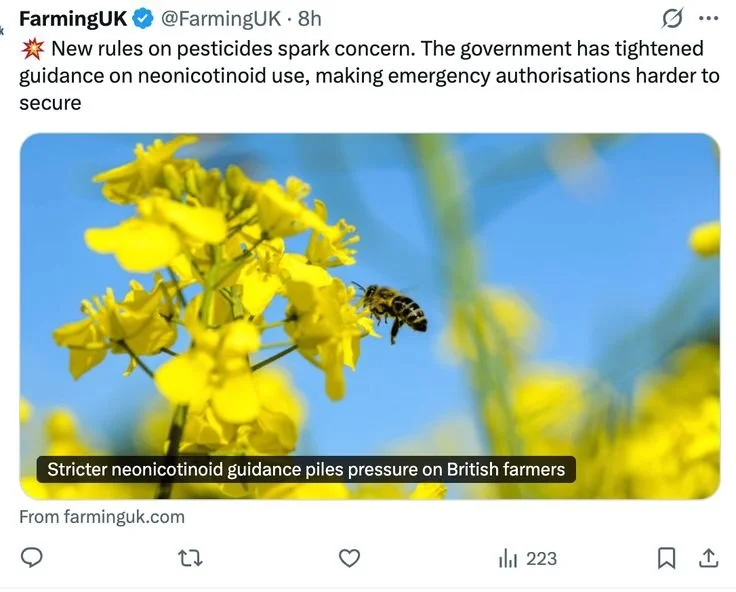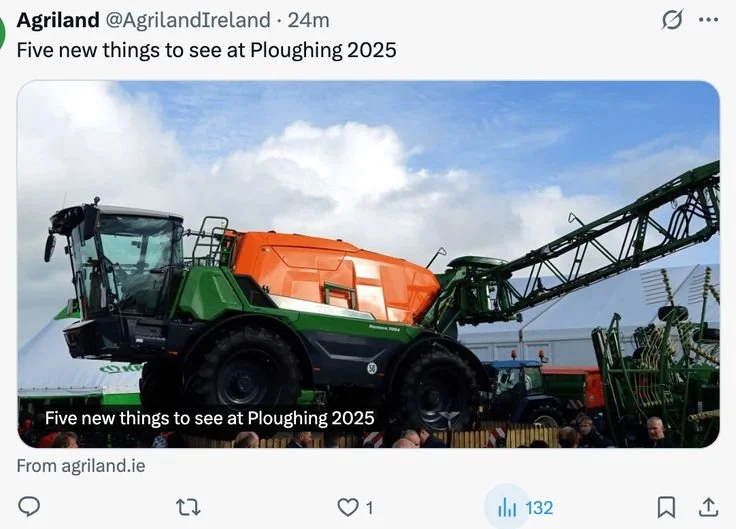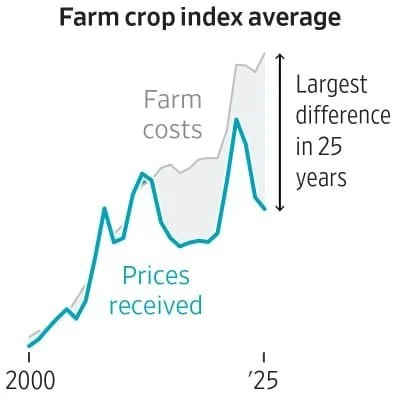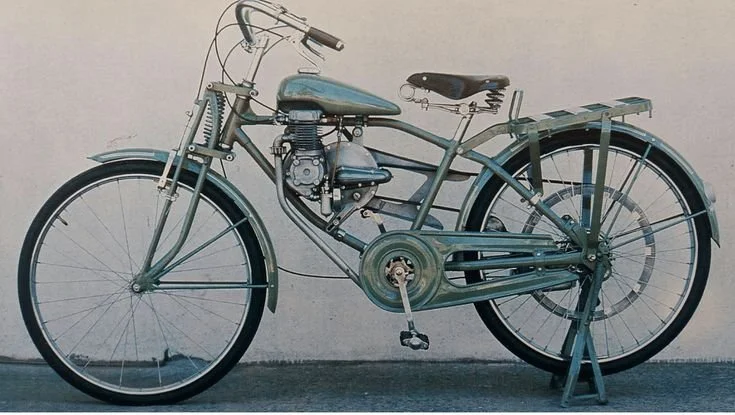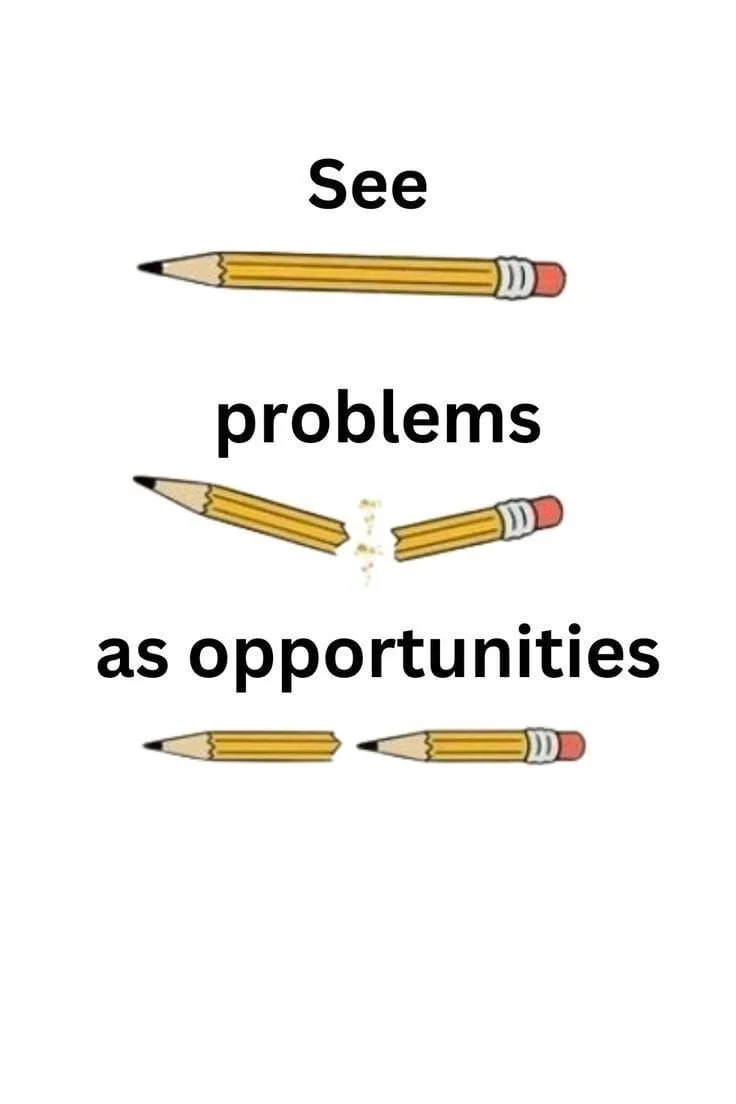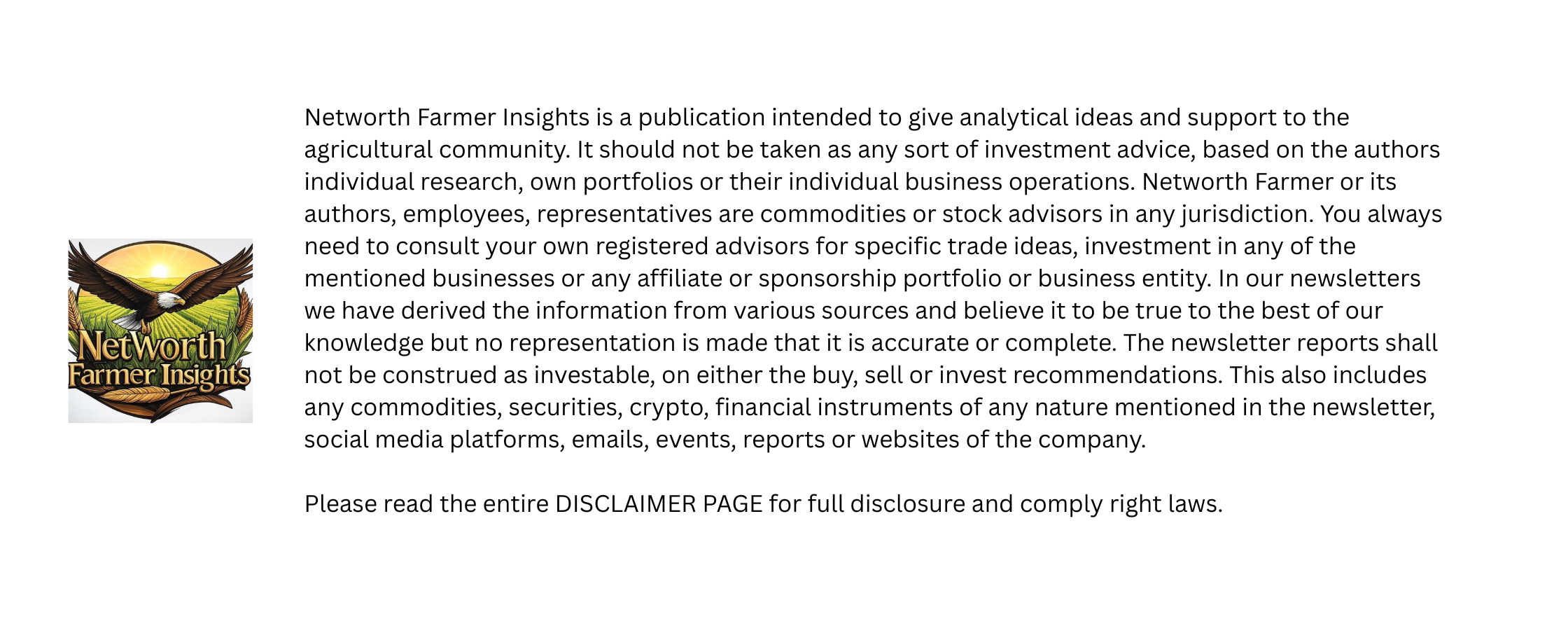Breaking New Ground
“There’s something about taking a plow and breaking new ground. It gives you energy.”
🚜 New in AgTech
From Dorm Room Dreams to Agricultural Revolution: The Hylio Story
How a university project became the catalyst for transforming precision agriculture across continents.
In 2015, inside a cramped University of Texas at Austin dormitory, aerospace engineering student Arthur Erickson was tinkering with drones. He wasn't using them for military purposes or aerial photography; instead, he had an idea that would change the way the world farms forever. Hylio, born out of a college dorm experiment, is now a market leader in agricultural drones and is changing the face of precision farming all over the world, from Texas to international markets.
The Origins
Immediately captivated by something much deeper than their initial interest in UAS, Erickson and his fellow University of Texas alums saw potential in drones beyond simple transportation. They foresaw autonomous systems that may help solve a major worldwide problem: how to feed an expanding human population with little damage to the environment. In 2015, while enrolled in an aeronautical engineering program at the University of Texas (UT) in Austin, Erickson and other UT Austin grads saw the immense potential of unmanned aerial system (UAS) technology. And so, the company's journey began. Thousands of miles away in Costa Rica, they pioneered parcel transportation services, a proving ground that would ultimately guide their agricultural applications, before making their breakthrough in American fields.
The Pivot That Changed Everything
After establishing themselves as a provider of services, Hylio shifted their focus in 2019 to selling their high-tech drone systems to farmers directly. Their ascent to fame began with this turning point. When Hylio initially set up shop in 2020, they sold drones to American farmers out of their Houston factory. During their inaugural trade event, they successfully closed a sale immediately! The timing couldn’t have been better. Climate change, labour shortages, and the need for more sustainable techniques were putting increasing strain on traditional farming. Hylio's technology provided a groundbreaking and realistic answer to these problems.
Breaking Barriers: The Swarm Revolution
The innovative approach to autonomous operations is what truly distinguishes Hylio from its competitors. A major step forward in precision agriculture, the company's swarming heavy drones have received FAA approval, which sets a new standard for the sector. Their unique swarm technology enables a coordinated flight of numerous drones, all of which can be controlled from a central location and can cover more ground than conventional farming equipment.
Originally designed to be carried in pickup trucks, Hylio's drones were able to fly complicated polygon flying patterns; thanks to their unique software. Operators may simply build treatment maps, draw limits, highlight obstacles, and assign treatments with Hylio's proprietary AgroSol software, which is available in both completely autonomous and manual modes on their latest HYL-150 machine.
Increased yields, less expenses, and less environmental consequences are all outcomes of farmers using these autonomous drones to apply crop remedies directly to afflicted areas. These drones are amazingly precise! They administer tailored medicines to crops without causing any harm, unlike conventional approaches. Talk about unprecedented accuracy!
Your Call to Action
Foreseeing a rise in the application of artificial intelligence and machine learning in crop monitoring, Erickson plans to have Hylio products installed on "almost every large farm in the United States" by the year 2030.
Don’t just sweep this off as another inspiration story. Hylio's tale offers a model for transformation to the leaders, investors, and innovators in the European AgTech industry. The innovations started in college labs in Texas are now prepared for international rollout as Europe encounters its own set of agricultural problems, such as sustainability regulations and the need for precision farming.
It is not a matter of if autonomous agricultural drones will change farming in Europe; the question is whose role you will play in that change. Bring together new AgTech firms, put money into precision agricultural enterprises, and fight for laws that let innovation flourish. The future of farming is taking flight. Will you be part of the journey?
-
What has a bottom at the top?
How Autonomous Harrowing is Solving Europe's Agricultural Crisis
A silent revolution is happening as the sun rises over European farms. Autonomous harrowing devices are changing the way we prepare soil, whereas traditional harrows require expert operators to labour long hours in tough conditions. This technology is not merely new for a continent that is facing unprecedented problems in agriculture; it is becoming a need.
A Perfect Storm Facing Europe's Farms
There is a turning point in Europe's agriculture sector. With agriculture's tiny and diminishing contribution to GDP and the public's poor opinion of the sector due to low earnings and restricted career options, labour and skills shortages are important concerns in the agrofood sector throughout OECD countries. At the same time, pest outbreaks, restrictions on pesticide use, rising energy prices, and harsh weather are all problems that fruit and vegetable producers must contend with.
According to the data, farmers are confronted with issues like climate change and a highly competitive global market. They have demonstrated incredible resilience in the face of a pandemic, an energy crisis, the fallout from Russia's aggressive war in Ukraine, and high inflation. Production cost increases, overseas competition, revenue declines, environmental restrictions, and bureaucratic red tape are the driving forces behind the agricultural crisis.
These overlapping demands call for environmentally friendly and economically viable solutions, which is precisely what autonomous harrowing technology offers to European farmers.
The Autonomous Advantage
Autonomous harrowing represents a fundamental shift in how we approach soil preparation. With autonomous digging, we can prepare the soil in a very different way. Traditional methods rely on human operators working during daylight hours. Autonomous systems, on the other hand, work with machine precision 24 hours a day, seven days a week. When farming equipment is self-driving, it doesn't matter what time of day it is, how long the shift is, or if a user gets sick or needs a break.
The HAR-E autonomous harrow is a great example of this change. It uses advanced GPS tracking, artificial intelligence, and sensor technology to till the soil with a level of accuracy that has never been seen before. The system can work nonstop, making changes in real time based on the condition of the soil, the amount of water in it, and the shape of the land. It can do its job better than even the most experienced human workers.
Addressing Europe’s Labor Crisis Head-on
Moving to self-driving machines and systems is helping farmers stay busy even though there are still not enough workers. This is especially important in Europe, where young people are becoming less interested in working in agriculture. Autonomous harrowing systems don't just fill in for workers who aren't available; they also increase farm output by making sure that the soil is always prepared in the best way possible, even when workers aren't available.
Think about the ripple effects: farms can keep their planting schedules even if they don't have enough workers, they won't have to rely on seasonal workers as much, and they can use their workers on more important jobs that require judgement and expertise. Agricultural robots have benefits like higher accuracy and efficiency and lower labour costs, but they cost a lot to buy at first.
Environmental and Economic Benefit
The benefits for the environment are just as strong. Autonomous harrowing systems use accurate route planning to cut down on fuel use and avoid going over the same territory more than often. Their sensors check the soil conditions before planting to make sure they are right, which keeps the soil from compacting and eroding and keeps it as healthy as possible.
From an economic point of view, one big farm in Illinois that was 10,000 acres big witnessed a 15% increase in productivity after using autonomous technology. This was done by precision sowing, optimised tilling, and little overlap, all without any help from people. European farms that use similar technologies say they get similar benefits, with lower operating costs making up for the initial investment over time.
Market Momentum and Future Outlook
The data show that more people are using autonomous farm equipment: the market for this type of equipment was worth more than $6.5 billion in 2023 and is expected to expand at a rate of more than 16.5% per year from 2024 to 2032 since more people are investing in it.
As European farmers deal with more and more problems, autonomous harrowing technology gives them a way to solve their problems right away and set their farms up for long-term success. The technology solves problems with a lack of workers, makes operations more efficient, has less of an effect on the environment, and gives the accuracy needed to meet stricter rules. The question isn't if autonomous farming will change European agriculture; it's if individual farmers will be the ones to make this change or be left behind.
European farmers who want to use autonomous harrowing should start by looking at how they do things now, getting in touch with technology providers, and looking into finance possibilities that make it possible to adopt the technology. More and more, agricultural groups, tech businesses, and government programs are helping farmers switch to self-driving systems.
Farming in Europe will be self-driving, efficient, and good for the environment in the future. You can design that future right now; the only question is whether you'll lead the revolution or follow it.
📢 Tweet of The Week
🌍 Fields & Frontiers
Balancing AI Data Centers and Rural Sustainability: The quick growth of AI data centres in rural America is a complicated problem that needs careful study. Critics say these centres are bad because they use up too much water and energy and raise utility costs. It's evident that data centres, which take up hundreds of acres instead of thousands, don't cause as much trouble as other industrial projects. But these centres need to be in line with rural aims and aspirations for long-term growth. Representative Moore says that putting data centres next to energy facilities could strike a compromise between new ideas and keeping costs down. The most important thing is respect on both sides. Developers need to give back to the community in a way that is fair to everyone so that rural America may not just power AI's future but also thrive alongside it. This balanced approach is very important for fair technical advancement and the growth of rural areas. There is now a push to study the impact of data centres on rural America as Agdaily reports.
World’s Kitchens with Grandmothers’ Love: Imagine savoring authentic Italian Osso Bucco one night and then delighting in a vibrant Japanese seaweed salad the next, all crafted by real grandmothers who have preserved recipes passed down through generations. What you are about to partake in is more than simply food; it is an emotional voyage, a joyous celebration of heritage, loved ones, and the care that went into each dish. Step into a world where tradition and passion meet in every bite—welcome to Enoteca Maria, a unique dining gem nestled in Staten Island, New York. Here, the kitchen is a revolving door of grandmothers from around the globe, each bringing their heritage to life through soulful, home-cooked dishes that feel like a warm hug from a beloved Nonna. Enoteca Maria is great for anyone who want to go on a culinary trip with heart and soul. It offers more than just food. Enoteca Maria is great for anyone who want to go on a culinary trip with heart and soul. It offers more than just food. It's about connecting with stories, traditions, and a world beyond of your plate. If you think that eating out should be a fun and interesting way to learn about culture and taste, dive into Bonappetit. It will make you hungry and touch your heart. Enjoy your senses and honour the grandparents who preserve traditions alive.
The Growing Problem in American Farms: Corn and soybeans are two commodities that American farmers have mastered to the point that they consistently harvest record harvests. Nevertheless, as a result of this achievement, there is now an excess of commodities, which is lowering their prices and cutting into farmers' profit margins. Technological breakthroughs have increased maize production by a staggering 729%, causing a glut that threatens agricultural profitability, even though fewer acres are planted today than a century ago. The decline in demand from long-standing consumers is a major issue, especially in China, which has been the biggest buyer of American soybeans for a long time. Brazil has surpassed the United States in soybean and maize exports due to the disruptions caused by trade conflicts, tariffs, and changing global policy. American farmers are confronted with increasing input costs and financial insecurity due to these tightening markets. Recent declines in soybean and maize crop conditions have further dampened optimism. American farmers are already facing a major challenge as a result of this dynamic: how to meet falling global demand with an overabundance of crop yields. There is an immediate need for market and policy solutions to preserve one of America's most recognisable sectors, since this matter brings up significant concerns regarding the future of agricultural economics, crop diversification, and foreign trade connections. With the use of charts, this in-depth analysis by The Wall Street Journal lays bare the complicated reasons why just two crops are so dominant in American agriculture.
From Noise to Connection: Feeling overwhelmed is a common experience in today's digital environment. Fake news, influencer postings that have been meticulously planned, and even AI-generated material are all competing for our attention on the endless scroll. I can see why a lot of individuals, particularly young adults, aren't blogging as often. They still want to share, but they don't feel like they can make genuine connections on social media anymore. It is more challenging to locate the basic updates from pals, the small insights into everyday life. Ads and high-production films, on the other hand, dominate feeds. As a result, a lot of people are subtly shrinking their social networks and seeking out more intimate settings, where they may have more natural, less staged discussions. Because of this change, social media is evolving. Perhaps what matters most in the future will not be the volume of our broadcasts but the quality of our connections. Rediscovering balance is possible when we lean into direct discussions and intentionally curate our digital presence.
The “so what”?: As the Netherlands gears up for its 2025 elections, a heated debate is unfolding over the country's ambitious protein transition—a shift crucial not just for Dutch agriculture but for global AgTech innovation. Political parties are positioning themselves on this critical issue: how best to reduce reliance on animal-based proteins and boost local production of plant-based alternatives like soy, peas, and lupins. For the AgTech community, this election is a pivotal moment. The protein transition isn’t just about environmental goals—it’s about reshaping the farming landscape with cutting-edge crop genetics, sustainable cultivation technologies, and innovative supply chains. Parties differ on approaches, balancing economic feasibility for farmers, technological investment, and consumer acceptance.
This election could determine the pace of innovation adoption and regulatory support in Europe's agricultural powerhouse. Decisions made now will influence not only the Dutch protein market but set precedents for sustainability, technology integration, and food security across Europe. AgTech entrepreneurs, investors, and farmers should watch closely—because the shifts in policy and public sentiment emerging from these elections will ripple through the entire industry, shaping opportunities and challenges for years to come. Get ready for a front-row seat to political change driving the future of protein and AgTech innovation in one of the world’s most advanced farming nations. To find out more, click here.
💡 A Thought For Friday
The Dreamer Who Revolutionized Transportation
A man his own wife called a "wizard at hardly working," wandering between odd jobs—race car driver one day, babysitter the next. Most would have written off Soichiro Honda as just another drifter. But sometimes, the most unlikely heroes emerge from the ashes of adversity.
In 1946, Honda stood before a bombed-out factory in ruins, seeing not destruction but possibility. While others saw rubble, he envisioned opportunity. With little more than determination and a pile of discarded two-stroke engines, he began tinkering. His first creation? Motorcycles that ran on turpentine, attached to flimsy bicycle frames—hardly the stuff of automotive legends.
Honda followed a fantastic plan without even knowing it, starting with "The Chimney," his first motorcycle, and ending with the revolutionary Cub that took over America. He began at the bottom, helping consumers that no one else would. Honda worked on making affordable, efficient transportation for regular people while other companies went after high-end markets.
Creator: Picasa
Sixty percent of the world's motorbike sales were under this "vagrant"'s control by the 1960s. His business continued to shake up the automotive industry with its fuel-efficient Civic and Accord models, which eventually challenged the behemoths from Detroit.
Honda's secret wasn't superior technology or massive capital. He understood that revolutionary change often begins in the margins, with simple solutions to overlooked problems. His internal motto, "Blue skies for our children," reflected his belief that innovation should serve humanity's future, not just corporate profits.
Here’s the million-dollar riddle that’s bound to keep every entrepreneur tossing and turning: What “totally useless” market or overlooked customer need could morph into the next billion-dollar jackpot? Sleep tight, right?
-
Your Legs.

